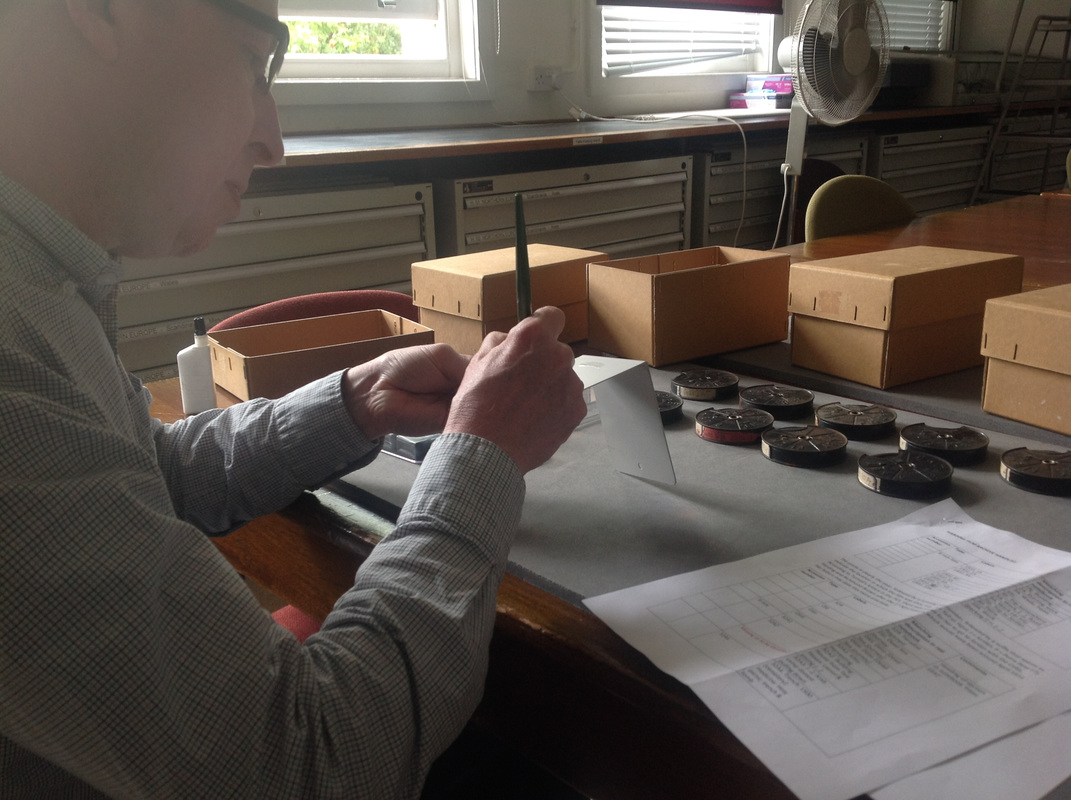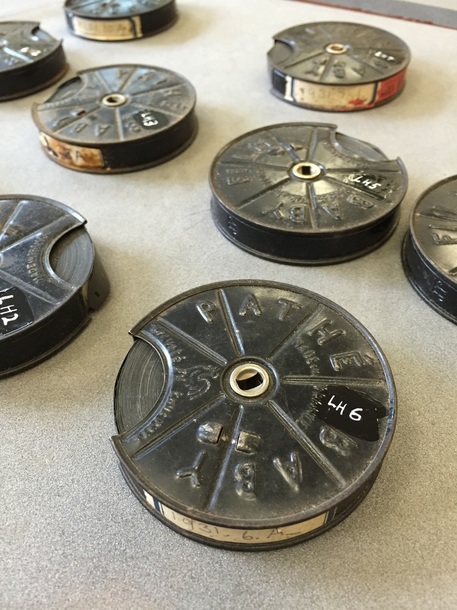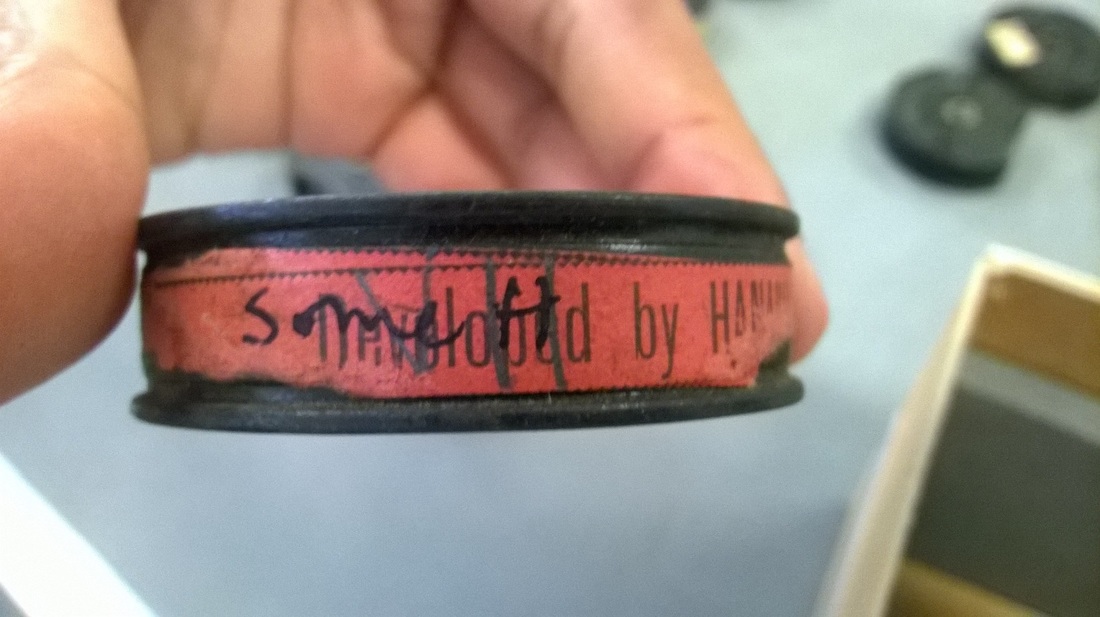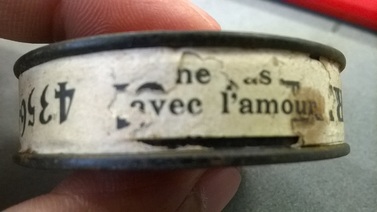We have been marking the film canisters in the Harding collection in preparation for taking the film footage to be digitised. There are in total 46 metal canisters holding film stock in the collection, ranging in size from 68.4 mm to 51 mm. Once empty of film, each original canister will be kept.
Marking the original canisters will allow us to retain the association between the information on the film canister and the digitised film. This contextual information will be added as metadata in the archive's record.
We put canisters into rough groupings, partially guided by references in the archive. Canisters with site names on the labels were kept together, and any numbers were put in sequence where possible. Although not all the canisters were labelled, some that were had information on the where the films were developed.





 RSS Feed
RSS Feed

